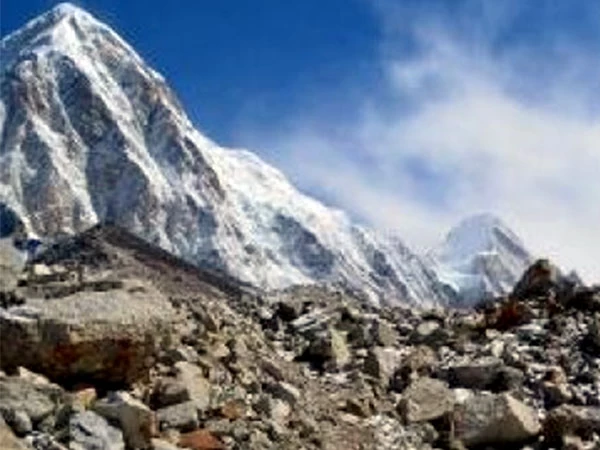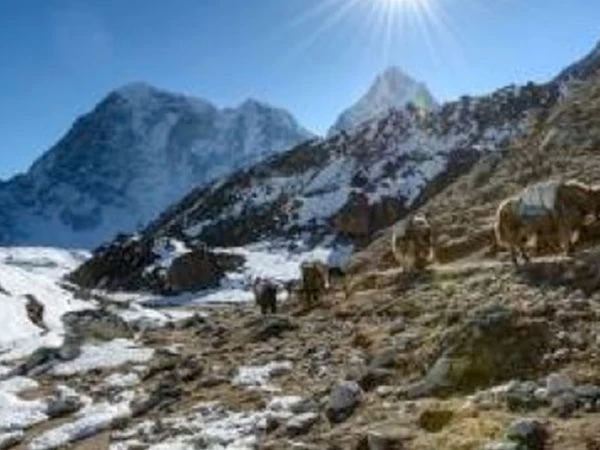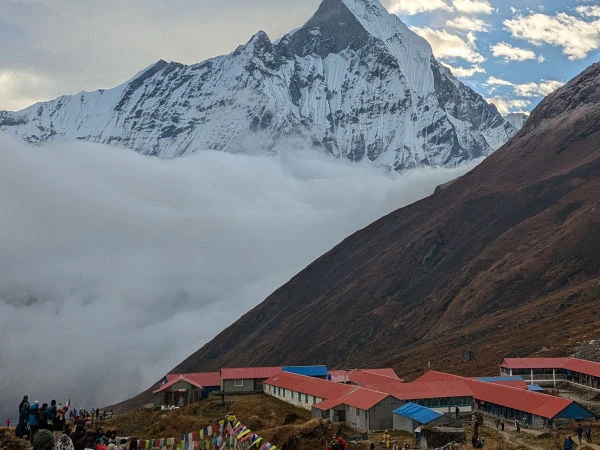Top 10 Essentials Required For Everest Base Camp Trek
It takes great courage to take on a trek, one that consists of terrains of fierce weather and brutal conditions, all the while flaunting absolutely spectacular vistas of the world's tallest peak in its full glory. With the backdrop of the azure sky painted with the pearly splash of clouds reflects the sunlight only to reveal the whole Himalayan range visible to the naked eye. Challenging one of Nepal's best trekking routes is a gamble with nature—you'll be in unreal proximity to the majestic mountains and be awe-struck with their sheer magnificence. This trek is practically convenient for those unable to actually climb the peak or those who are in a tight time crunch of getting many things done at once. As much as it is a thrilling experience, Everest Base Camp Trek allows you to set back and exhale deeply in peace at the blissfully calm realm of the Himalayas.
The magnificent Everest was first conquered by Tenzing Norgay Sherpa and Sir Edmund Hillary in 1953. Most agencies that provide the trekking packages include a mountain flight to Lukla before heading towards the starting site of the EBC trek. The trek encompasses the aspects of the preserved Sherpa culture as the trail leads through various Sherpa villages and towns along the way. Namche Bazaar, famous for being the dwelling of the Sherpas, radiates the ambiance much likely to that of other towns like Tengboche and Dingboche due to the fair amount of ancient monasteries scattered all over the place. Kalapatthar remains the vantage point from where you remain right in front of the glorious Mt Everest (8848m). The Khumbu Glacier and the Icefall are also some places that are notably famous in this area.
All in all, it's a fulfilling experience to be at the base of the world's tallest mountain. Now it might seem like a great trek, you'll need to be extra careful while packing for it. We have come up with a list that can clarify your questions on what needs to be brought and what not.
1. Food and Hydration:
One of the most basic aspects of trekking in a very cold climate is understanding what to eat and drink and when. The route along the trek might have tea houses but it is unlikely you'd want to stop a lot to eat heavy meals. Hence, it is important to carry sufficient snacks for the whole trip. At regular intervals, these snacks can be eaten. However, only some foods like chocolate and nuts remain somewhat immune to the cold. The trick is to keep whatever you bring along close to your body since the body heat will prevent the food from hardening.
Water bottles are incredibly handy in colder areas since the water tubes in hydration reservoirs are prone to freezing. Keep the bottles inside the backpacks instead of the exterior pockets. The bottles too may freeze and block the opening. In the case of prevention, keeping the bottle upside down will do it. Vacuum insulated flasks or bottles are perfect for hot drinks like tea or coffee, a must for this type of journey.
2. Clothing and Gears:
Never forget this: Layering. It's all about layering in this part of the Himalayan terrain considering the weather is constantly changing in each level of the overall trekking. In order to overcome this, layering, especially the three-layer style allows you to add and remove layers throughout the trek to stay warm and avoid overheating at the same time. This includes the base layer of Thermo coats, the second layer of trek shirts and the third layer of the fleece jacket. Further additions include insulated jackets and rain gear. Avoid getting wet at all cost. Wet clothes lead to hypothermia which can be deadly. Cotton clothes also must be avoided. Instead, alternatives of wool must be worn. It is to be noted that the clothes should not be tight. It can cause suffocation and frostbite.
Starting with the most innermost layers, underwear might seem unimportant but it's the thing that makes the biggest difference. Breathable and comfortable sports underwear, avoiding the cotton ones, can prevent wicking. Even for the females, about 3 pairs of good sports bra should be kept. Another significant trick is to keep skin away from exposure. Wearing waterproof shell mittens or shell gloves, synthetic socks that are cozy just enough and not too tight, a gaiter for the face, ear muffs, hat or cap etc. can keep the exposed area off limits of the sun as well as the harsh winds. In addition, wearing sunscreen and glasses can give extra safety.
Boots are other integral components of trekking. The right boots lead you to the right places. A pair of perfect boots incorporates light-to-mid-weight, has high tops for ankle support, rubber soles with deep lugs for good traction, and a lacing system that incorporates d-rings or speed hooks for quick lacing and further ankle support. Thermal socks should be carried for colder days while merino wool socks are enough for the rest of the time. To prevent water, mud, dust and small stones from getting into your boot, trusty waterproof gaiters are the saviors.
3. The Backpack:
If you are traveling without the help of any porters, a 45-60L top opening backpack/rucksack is your best bet. It will fit in all your essentials and even have a little bit of extra place for the other items. Laminated bags with sturdy zipper are offered by North Face and Osprey. If you're going on the trek with porters or yak, you can go with an 80-90L bag with lasting items. Not only that a small lightweight backpack is also suggested for the most essential items like bottles, camera, personal items etc. Usually, these backpacks already have a rain cover but if they don't it is necessary to bring your own as a backup.
4. Camera and Video camera:
Yes, it's thrilling to go on an adventure in a totally new destination but it's even better when those fond memories can be stored and saved for the future. It's a humble experience to record the magical moments shared with Mother Nature in the vastness below the seamless blue sky and above the fresh white snow. Therefore, a decent camera is a must. DSLR cameras are highly recommended, considering you want it to have spectacular quality without the worry of the weight. For videos, GoPro series are apt, having all the good reviews and raved by trekkers very often.
5. Accessories:
You might want to take in the accessories like trekking/hike poles as the journey can get strenuous at times. Along with that, a pair of sunglasses will protect your eyes from the sunlight reflecting from the snow. Since the journey might exceed the time of the day and blend into the night, a functional headlamp is necessary.
6. Other Necessities:
Adding to the most important items, other necessities like a good trekking towel will help you feel refreshed throughout the time. In times of extremely difficult situation (especially for the ladies), urine holders (pee bottles) can be helpful. If you have any travel experience then you know how essential ziplock can be. It protects all your important documents including passports and electronic devices.
7. Entertainment means:
On a long journey, you might feel a bit hard to adjust. If you're an avid writer, you could carry a notebook and pen to pour out your thoughts whenever you want. Books are also great as a means of entertainment in the journey where you can get the new perspective on the read contrary to previous ones. For those requiring other sources, a pack of cards (we insist on UNOs too) can keep you on your toes.
8. Back up charger / Portable battery charger:
While you'll get plenty of charge time in lodges and tea houses with electricity, you never know when times can fail you. Therefore, a portable back up charger can be crucial in times when you might want to simply click a picture without an empty battery or even in life-threatening situations.
9. Toiletries:
Keep your bag of toiletries like toothbrush, toothpaste, toilet paper, wet tissues etc separate from the rest of the luggage. It will definitely make it easier for you to reach a bag than to scour the whole luggage for it.
10. First Aid Kit:
A basic first aid kit cannot be forgotten at any cost. Even the general medicines for altitude sickness, headache, cramps, gastric and other common sicknesses should be kept. Handiplasts /blister plasters, spray sunscreen, lip balm/petroleum, etc. can also be packed. If you have some medical problems, you need to carry your own medicines since there are scarce health posts around the area.
You don't need to stop at just these. While our suggestions are research-based, it might not be personally crafted for each traveler. Hence, it is important to try to take as much knowledge as you can before embarking on this journey. You might think it will dampen or dull your experience but anyone who has already trekked this trail will guarantee you that it definitely isn't the case. Explore and keep exploring because each information you gather will definitely aid you to complete the journey with relative ease. Everest Base Camp Trek will be a memory you will want to treasure for the rest of your life. Don't miss the opportunity!





